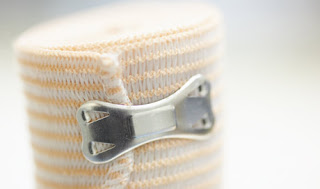 Usually, wounds are easy to handle at home. But, at times you may
require assistance of professionals to add a few stitches, and cover it up with
bandages r dressings. Some wounds are easy to manage, while some hurts much
more than just the flesh and hence you will require Wound care management services. This is where the hospitals come
into limelight. They use variety of techniques and ensure that the patients
with severe wounds receive the best care so that their wounds heal up quickly.
Usually, wounds are easy to handle at home. But, at times you may
require assistance of professionals to add a few stitches, and cover it up with
bandages r dressings. Some wounds are easy to manage, while some hurts much
more than just the flesh and hence you will require Wound care management services. This is where the hospitals come
into limelight. They use variety of techniques and ensure that the patients
with severe wounds receive the best care so that their wounds heal up quickly.
The prime focus of Wound care Australia is to help the patients heal their wounds at the earliest, while
minimizing the risk to the patients. For severe injuries and wounds the health
professionals employ the facilities and make use of different types of
dressings. Although they make use of different types of dressings for wounds,
but the most commonly used dressings are hydrocolloid and foam dressing.
Hydrocolloid – Hydrocolloid dressing is the type of adhesive used widely for different types of wounds
and it comprises gel-forming agents. The hydrocolloid dressings that are widely
used for wounds combine adhesives and elastomers and it is applied to a
polyurethane form or film carrier that forma a self-adhesive, absorbent,
water-proofing dressing or bandage for wounds. Though these types of dressings
are quite advanced bandages that are widely used to treat patients with chronic
wounds, but they are also used for everyday foot care needs like minor cuts,
abrasions or mild burns, thus offering exceptional wound management experience
to patients.
Hydrocolloid bandages are skin-friendly, double layered devices that are
made out of skin-like smooth top layer and absorbent adhesive bottom layer.
These types of dressings are for granulating and epithelializing wounds,
especially those that are draining moderate amount of exudates. These types of
absorbent bandages promote auto-lytic debridement and prevent the wound
exudates from coming in contact with necrotic tissues.
These dressings are mainly used to promote exceptional moist wound
healing environment. The bandage is directly applied on the non-infected wound
and these dressings prevent the wound from infection. The adhesive layer of the
bandage comes in contact with the fluids of the wound to create a sift gel. On
removal, the get matrix is also removed safely along with the bandage, thus
resulting in no damage to the newly formed tissue around the wound. These types
of dressings are water-proof and remain in place taking shower.
Form Dressing - Form dressing is widely used today by hospitals to preserve a moist wound environment and it
has the ability to absorb the drainage perfectly. The form dressings are made
out of hydrophilic polyurethane form and can be used as both secondary and
primary dressings. The absorbency level of form bandages are quite higher and
never leave behind any fluid in the wound bed when removed. It is available in
a variety of sizes, shapes and thickness level. You will find pillow, sheet and
pad form bandages with both adhesive and non-adhesive bottom layer, thus making
removal easier and painless.
